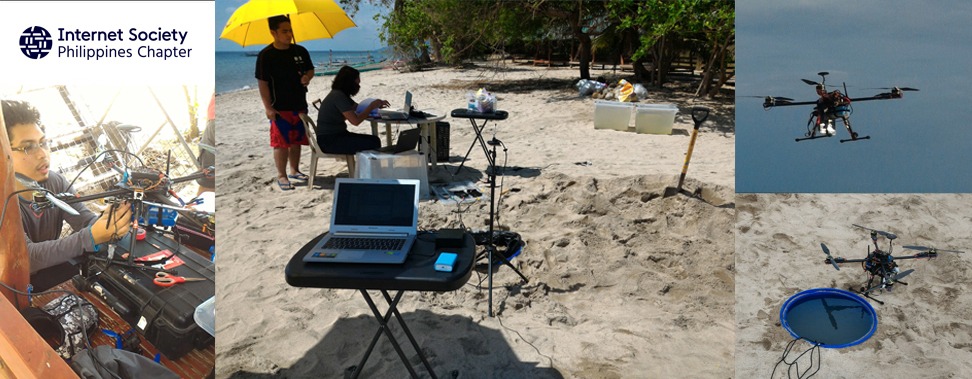Philippines is the 4th most disaster-prone country in the world. When a natural disasters hits we are completely wiped out. In remote and rural parts of the Philippines, telecommunications networks can be spotty most of the times. This scenario is willing to change thanks to the Internet Society’s Philippines Chapter new project supported by Beyond the Net Funding Programme.
The aim of the project is to send UAVs — or what most of us call drones — in disaster zones to act as wireless relays and data aggregators. The drones would set up a local MESH network to help people to get in touch with the loved ones. It would also help emergency workers to work safely and talk to one another. The project will also make possible that the drones will be able to work with Unmanned Ground Vehicles (UGVs) to find information about the situation on the ground.
In the recent years, interest in Unmanned Aerial Vehicles (UAVs) has been evidenced by innovations in this emerging field. Hobbyists and scientists alike have leveled up the use of UAVs in many ways such as forestry surveys, remote sensing and disaster management. While much of the focus of drones to date has been on military applications and as toys, the future of drones as humanitarian tools is getting more promising by the day. Commercial industries view drones as the new logistics support mechanism for parcel delivery, they are also used by environmental bureaus for tracking river flow changes.
In a country prone to disasters like the Philippines, researchers saw the opportunity to implement drones in the field of disaster management. Over the years, the Ateneo de Manila University Innovation Center has been developing use cases for drone technology, mostly for mission-critical scenarios as decision-support platform. Dr. Nathaniel Joseph Libatique, a professor at Manila University said: “We can all do optimization on battery life, rotor design, and frame aerodynamics, but at the core of engineering for humanity is the UAV’s payload – this niche is a breeding space for innovation. Say for example, we can do a fly-by and detect victims in a collapsed building, or do cooperative flights with ground teams – we can cover the breadth of a situation while scaling up value-added systems such as location detection, risk profiling, and even internet connectivity!”
Using hybrid communications technologies and devices – Push-To-Talk (PTT) Radio, Android-based protocols, Raspberry Pi hubs, 915 MHz and 760 MHz transceivers and delay tolerant communications standards (RFC 5050) – the project team continues to demonstrate how critical information such as victim or survivor identities and needs can be robustly transmitted to command and control using bump communications, aggregation and store and forward techniques. Information analysis such as facial recognition and pre-stored information of survivor social networks, especially for the elderly and PWDs, enable an efficient and targeted response.
Flying over the municipality of San Juan, Batangas, a province 140 kilometers south of Metro Manila, the team did a series of experiments that demonstrated the role of UAVs integrating connectivity, highlighting cooperation and underscoring collaboration. In a disaster situation, responders use various radio communication media and this presents an opportunity to interface drones with these devices. Systems incorporating ground vehicles and UAVs provide the breadth and scale necessary to respond to disasters and undertake victim rescue apart from purely imagery missions. In this series of tests, the team did propagation measurements between “victims” and drones functioning as rescuer/alert vehicle. The UAV was flown above the antenna setup subject to the applicable civil aviation rules, utilizing the frequency (760 MHz) as approved for experimental use by the telecommunications regulator. Initial results reveal the potential of UAVs to complement ground teams in the performance of victim rescue support.
Stay tuned for the upcoming blog and follow our stories on Twitter
Share this story
If you like this story, please share it with your friends. That would tremendously help in spreading the word and raising the visibility of this project. Help more people understand how the Internet can change lives.
We are interested in your project
We are looking for new ideas from people all over the world on how to make your community better using the Internet. Internet Society “Beyond the Net Funding Programme” funds projects up to $ 30.000 USD.
